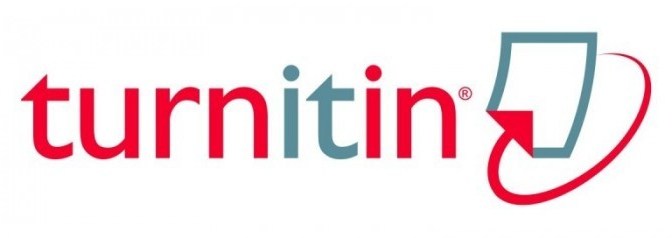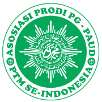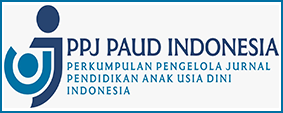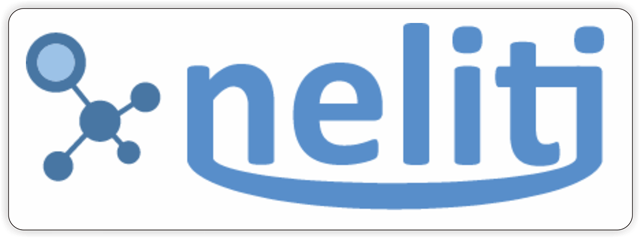Author Guidelines
ARTICLE AUTHOR'S INSTRUCTIONS
TEMATIK: Jurnal Pemikiran dan Penelitian Pendidikan
TEMATIK: Jurnal Pemikiran dan Penelitian Pendidikan published two times a year, namely in June and December, contains writings/articles of thought and research results written by experts, educators, scientists, practitioners, and study of the disciplines of education, teacher training, and learning in the field of early childhood education.
General Requirements
- The article results from a thoughtful study and research on early childhood education.
- Submitted articles do not contain any plagiarism, have not been published, and are not considered for publication elsewhere. The author is required to write a statement related to this.
- Manuscripts are written in Indonesian or English, and the article length is at least 4,500 words (excluding bibliography.
- The writing is contained in paper A4 (21 x 29.7 cm) with the typeface Times News Roman, single space. The article should set the margin at 2 cm (top and left) and 3 cm (bottom and right).
- Before submitting an article to an online submission system, authors must first register following the five steps.
- The systematics of the manuscript consists of the title, author's name with an email to the author of correspondence, author affiliation and national origin, DOI (provided by the editor), abstract and keyword (English and Indonesian), introduction, method, results and discussion, conclusion, and reference. Please download the article template.
- The article should write the title of the manuscript in uppercase letters at the beginning of the word, middle, 15-point font size, and bold. Titles written in Indonesian should not be more than 17 words, and titles written in English should not be more than 15 words.
- The author's name does not use an academic degree and is written under the title of the manuscript. If a team writes the manuscript, all terms should be mentioned. The authors whose names are mentioned are only those who have significant contributions. Authors' names should be sorted based on their contributions to the manuscript. The editor will only communicate with the main author/correspondence.
- Abstracts and keywords should be written in 120-180 words in English and Indonesian with one space. The abstract should contain the title, objectives, methods, findings, discussions, and conclusions of the study. It features 3-5 keywords that describe the substance of the manuscript. Keywords should not be part of the title of the manuscript.
- The introduction contains the research background, research context, a review of the primary literature underlying the research, and research objectives. Authors are strongly advised to refer to recent articles published by reputable journals over the past ten years. The report should present introductions in paragraphs with a clear and sharp peel of the state of the art, research gap, and research objectives.
- The research method explains the methods used by the researchers to produce the findings. This section should present the scientific research procedures carried out by the researchers. The process also contains research approaches and methods, data/population and sample sources, sampling techniques, instrumentation and data collection methods, and data analysis techniques.
- Research findings and discussions contain interpretations based on research objectives. Describe the research findings by the purpose or problem of the research. Research findings should be discussed, interpreted, and compared with previous related theories and research findings. The discussion should show the novelty and significance of the results. Discussion is an essential part of the article, so the author needs to provide a clear and complete explanation.
- Conclusions contain research findings and summaries of discussions. Conclusions are presented in paragraphs. Write down essential findings briefly. Provide recommendations for future researchers related to follow-up research.
- Manuscripts are reviewed anonymously by reviewers who have been assigned according to their expertise. Authors are allowed to revise the manuscript based on the recommendations of reviewers or editors. The author will receive written information about the manuscript's acceptance or rejection.
- The author is responsible for everything relating to permission to quote or use computer software during screenwriting and the intellectual property used, and its legal consequences.
- Authors must check and edit errors in language usage, including vocabulary, sentence structure, uppercase, and punctuation, before delivery. Authors can refer to previously published articles to tailor their papers to the writing style of the journal.
- References must include recent publications (not more than ten years). Key sources such as journal articles and research reports, including undergraduate thesis, master's thesis, and dissertation, are welcome. Manuscripts published in accredited national and international journals should take priority.
- Citations, references, tables, drawings, illustrations, statistics, and bibliography writing should refer to the Publication Manual of the American Psychological Association (6th edition) and the APA Style Guide for Electronic References. Manuscripts written in Indonesian should be directed to the General Guidelines of Indonesian Spelling Language and the standardized Terms.
- Use locked-up referral techniques (last name, year) to write references. Citations in the text should include page numbers and sources.
Example:
One writer: Menurut Fairclough (2010: 99) atau .... (Fairclough, 2010: 99).
Two writers: Menurut Kalantzis & Cope (2012: 129) atau .... (Kalantzis & Cope, 2012: 129)
Three authors: Menurut Miles, Huberman, & Saldana (2017: 10) atau .... (Miles, Huberman, & Saldana, 2017: 10).
More than threea uthors: Menurut Syamsuardi, et al. (2018) atau .... (Syamsuardi, et al., 2018)
20. References should be arranged alphabetically and chronologically and written as follows.
Book:
Hopkins, D. (2011). A Teacher Guide to Classroom Research. New York: McGraw Open University Press.
Translated Books:
Anderson, L.W. & Krattwohl, D. R. (2001).
Kerangka Landasan untuk Pembelajaran, Pengajaran, dan Asesmen: Revisi Taksonomi Pendidikan Bloom. Diterjemahkan oleh Agung Prihantoro. 2010. Yogyakarta: Pustaka Pelajar.
Manuscripts in compilation books:
Dhieni, N. (2011). Dasar-Dasar Pembelajaran di Taman Kanak-kanak. Dalam Azizah dan Syamsuardi (Eds.),
Praktik Pembelajaran di Taman Kanak-Kanak (hlm.25 - 30). Makassar: Badan Penerbit UNM.
Manuscripts in the Journal:
Syamsuardi. (2010). Praktik Pembelajaran di Taman Kanak-Kanak. Jurnal Raudhatul Athfal, 6 (2): 13-21.
Manuscripts in electronic journals with DOI:
Hajerah, Syamsuardi, Azizah (2016). Pengembangan Model Pembelajaran Membaca dan Menulis Permulaan di Taman Kanak-Kanak. New Educational Review, 48 (2): 76–86, doi: 10.15804/tner.2017.48.2.06
Manuscripts in the Newspaper:
Agustien, H. I. R. (1 Maret 2013). Bahasa Anak Usia Dini, Kompas, hlm. 6.
Thesis, Thesis, Dissertation, ResearchReport:
Wahyuni Sri. (2015). Pengaruh Bermain Kolase Terdahap Perkembangan Motorik Halus Anak di TK Teratai Universitas
Negeri Makassar.
Skripsi. Makassar: Universitas Negeri Makassar.
Papers presented in Seminars, Discussions, Workshops, and Training:
Musi Muhmmad A. (2018).
Perkembangan Kognitif Anak pada Masyarakat Bajo. Makalah disajikan dalam Kongres
Internasional Pendidikan Anak Usia Dini di Sulawesi Selatan, Hotel Sahid Makassar, 5-6 Maret 2018.
Internet (manuscripts in online journals):
Widodo, A. (2006). “Profil Pertanyaan Guru dan Siswa dalam Pembelajaran Sains”.
On line. Jilid 4 Nomor 2,
http://upi.edu, diakses: 20 Maret 2012.



























